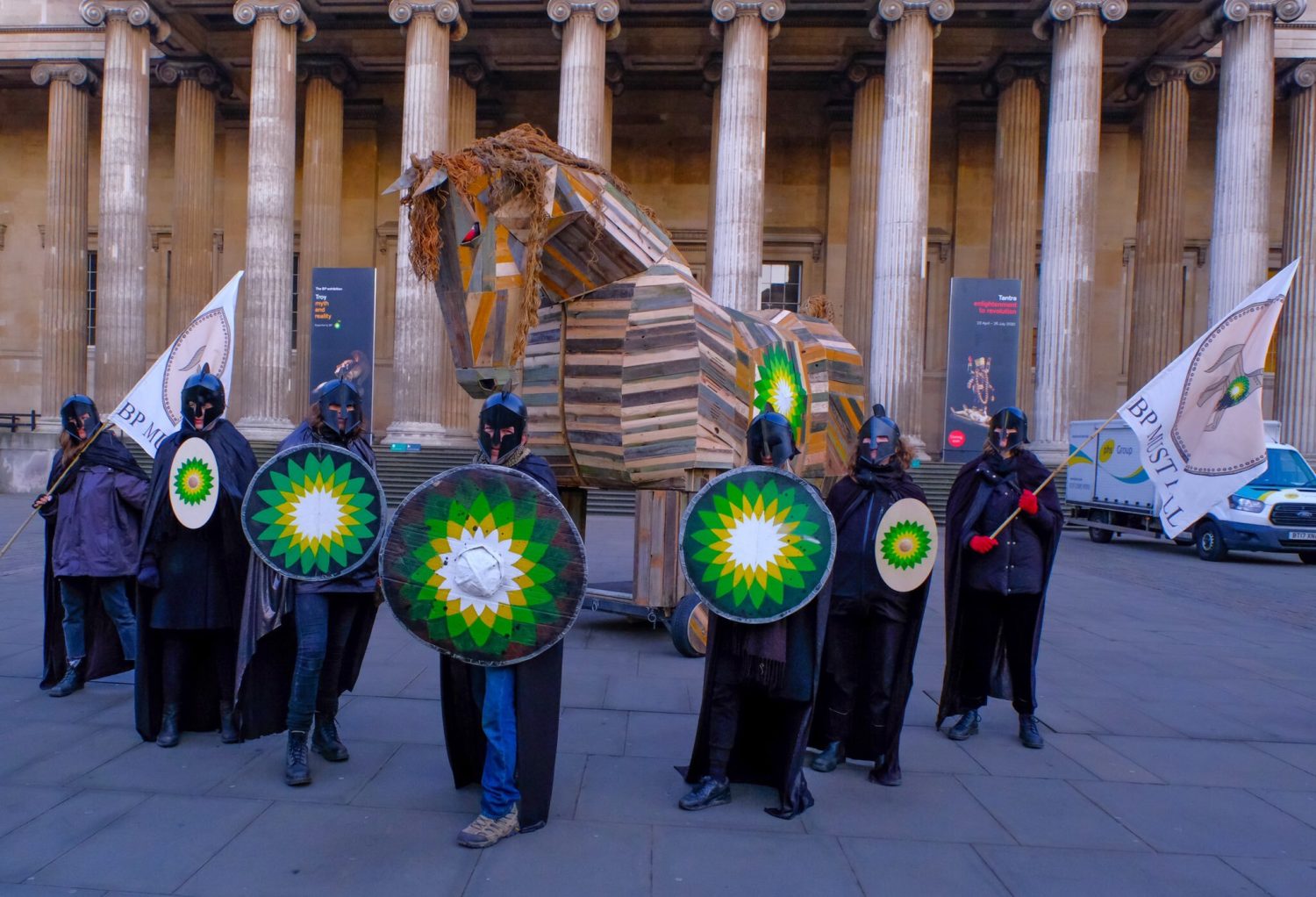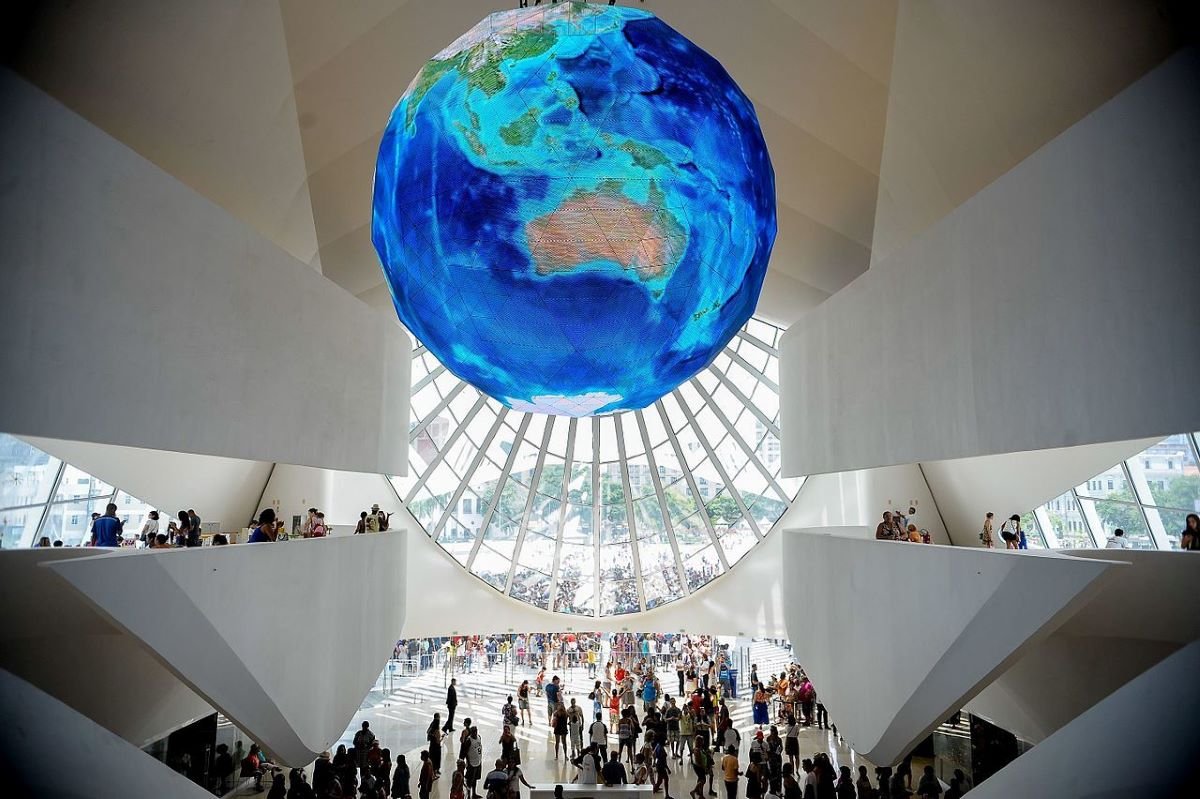
The US west coast is on fire, the hurricane season is off to an early start and in the UK a year of unseasonal weather has resulted in the worst wheat harvest in decades – yet more reminders that climate change is a pressing and immediate global crisis. And, as leaves fall and mists rise at the beginning of October, the South Western Federation of Museums and Art Galleries (SWFED) will host its annual conference (virtually of course) to discuss ‘Interpreting, Curating and Combatting the Climate Emergency’.
Climate change has been on the agenda for the museums and galleries sector for some years. Shifts in outlook and operational practice have reflected the growing environmental concerns of museum visitors and a heightened sense of the moral agency of the museum, and its potential to contribute to social change. Museums, as predominantly publicly-funded institutions, have always followed professional ethics codes, but these are no longer enough. SWFED is right to refocus on this issue now.
The Covid-19 pandemic and the appalling killing of George Floyd have profoundly affected the sector in recent months. But the spectre of climate catastrophe is re-emerging as the key driver for change. In August, Nick Merriman, chief executive of London’s Horniman Museum, argued that museums need to use their influence to turn visitors into environmental activists, and that now is the time for museums to abandon their traditional position of ‘authoritative neutrality’:
“Museums must use their position as long-term memory institutions to look beyond short-term political and funding cycles and speak out about issues that are existential threats to all of us.”
For Merriman and others, the pandemic has highlighted that perpetual growth is no longer a tenable prospect for museums and galleries, any more than it is for wider society, and that they need to transition to more sustainable models. But what does sustainability mean in this context, and how is the UK museums and galleries sector – a field perhaps not associated with agile behaviours – transforming its practices and using its assets to advocate engagement with the climate crisis?
Sustainability is often defined as development that “meets the needs of the present without compromising the ability of future generations to meet their own needs”. As expressed in the United Nations’ 17 sustainable development goals, this means addressing everything from climate action and access to clean energy to all aspects of social justice such as zero hunger, health, education, gender equality and decent work. Such goals are neatly encapsulated in the widely-referenced three pillars of sustainability; Environment (planet), Social (people), Economic (profit).
Advice for museums on how to become more sustainable has been around for at least a decade. For example, in her 2011 book Sustainable Museums, Rachel Madan outlines guidance for the survival of museums through sustainable operations, demonstrating the economic benefits of reducing environmental impact (waste, energy use, etc.). In the UK, Arts Council-funded organisations are required to have environmental policy and action plans and to monitor their environmental impacts. As Nicholas Serota, chair of Arts Council England, commented back in January:
“Cultural organisations are embedding climate action into the core of their operations – developing creative solutions, forging new partnerships and sparking valuable conversations on sustainability with their audiences.”
In the last two years many of the UK’s museums have declared a climate emergency, and have adapted to try to deliver on the necessary action this declaration implies. For example, all waste from London’s big museums (Tate Modern, Tate Britain, British Museum, the National Gallery, the V&A and Imperial War Museum) is now reused or recycled, composted, or incinerated using techniques that allow for energy recovery. In the South West, small Arts Council-funded galleries such as Newlyn Art Gallery & The Exchange have worked collaboratively with local businesses and schools to achieve ‘Plastic Free Penzance’, a campaign led by local resident Rachel Yates that established Penzance as the first plastic-free town in the UK in December 2017.
Further afield, new museum builds now prioritise environmental sustainability, while some, such as The Museum of Tomorrow in Brazil (opened in 2015) combine science and art to explore the need for global change. Similarly, Dubai’s Museum of the Future (due to open in October this year) will invite visitors to help find solutions to critically explore “the threats and opportunities of our time” and to “join us in conceiving a better future for ourselves and our planet”.

While new publicly-funded builds in the UK now seem unlikely, existing museums are working hard to address the climate crisis through public engagement programmes, supported by non-profit organisations such as the Climate Museum UK. This is a mobile and digital museum that facilitates exploration of the climate and ecological emergency through creative learning activities, pop-up events, exhibitions and workshops. The first Climate Museum was set up New York in 2015.
In the South West, museums such as the Royal Albert Memorial Museum (RAMM) have used their unique relationship with communities to collaborate in ambitious civic projects that aim to promote sustainability. Working with Exeter City Futures, in 2018 RAMM engaged with citizens to create a collaborative vision of a more sustainable city as part of Exeter‘s 2025 Minecraft Challenge project.
Of course, a big sticking point in the UK and elsewhere has been the over-reliance of publicly-funded museums on sponsorship from the fossil fuel industry. Protests against the ‘green-washing’ of disaster capitalism and major polluters through cultural organisations have escalated, putting pressure on arts institutions to review their funding partnerships.
Tate’s longstanding sponsorship arrangement with BP ended in 2017 and the National Theatre, RSC and the Southbank Centre have all recently ended their relationships with fossil fuel companies. Others, such as the National Portrait Gallery and British Museum, find themselves under increasing pressure to do the same. Earlier this year, climate change activists delivered a Trojan Horse to the British Museum in protest against BP’s sponsorship of the museum’s blockbuster exhibition ‘Troy: Myth and Reality’. BP Must Fall was the largest protest seen by the British Museum in its 267-year history.
The cultural value of museums as ambassadors for sustainability is now widely acknowledged. But sustainability isn’t just about minimising waste and conserving energy; it’s also about people. This is recognised in the UK’s Museum Association principles for sustainable museums as the need to build long-term relationships with a range of audiences, be responsive to context, and above all to have a long-term purpose that reflects society’s expectations of museums.
Let’s hope that museums and art galleries can continue to work more closely with their audiences both locally and through global collaborations, to help turn things around, as Merriman says, “before it’s too late”.





